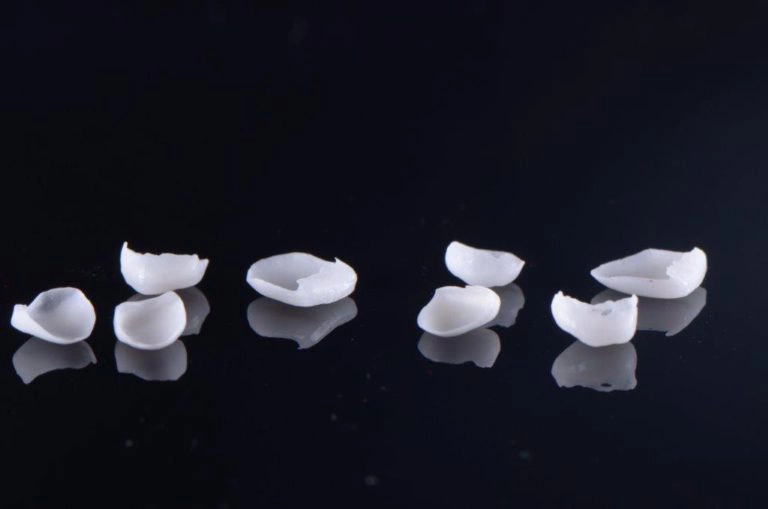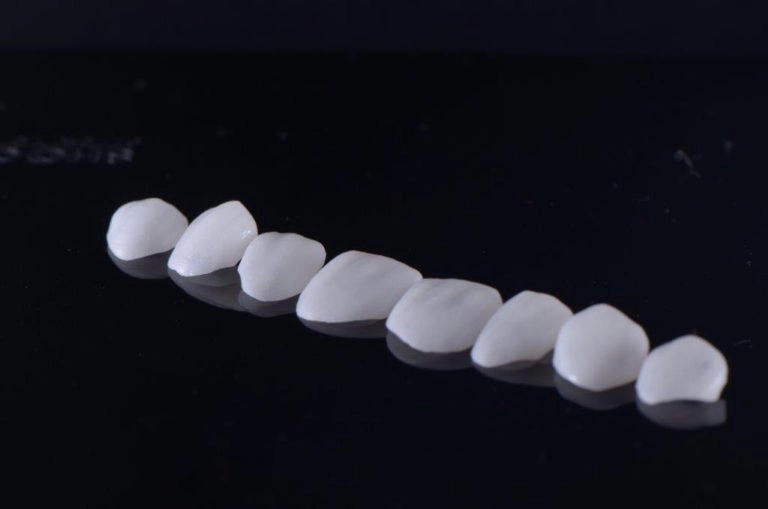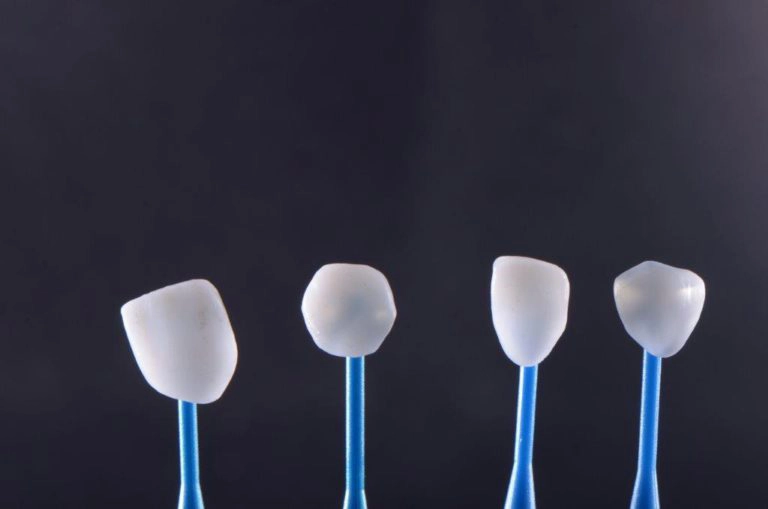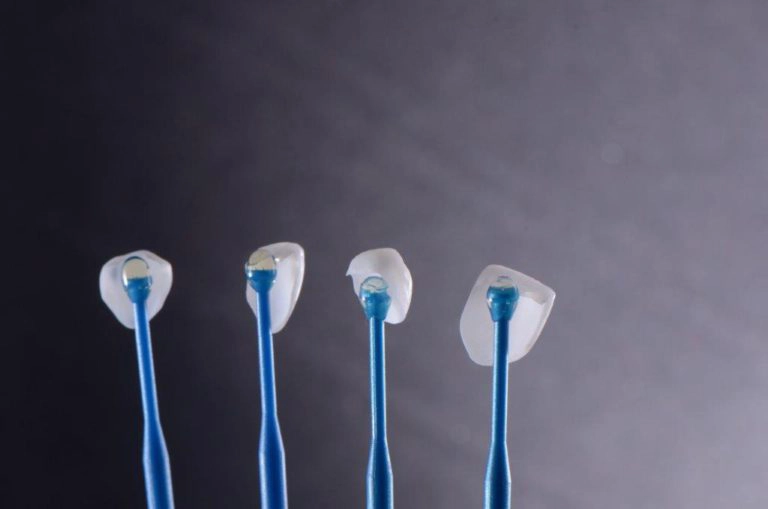Porcelain veneers
1. What are porcelain veneers?
Porcelain veneers – these are thin plates of ceramic material placed on the front surface of teeth to improve their appearance, they can be made on both front and side teeth.
2. How do veneers differ from crowns?
Veneers cover the tooth only on the front surface. Crowns cover the tooth completely and are made to rebuild more damaged or worn teeth.
3. What material are veneers made of?
Porcelain veneers are made of modern, high-technology all-ceramic materials, which allow for maximum aesthetic effect and maximum durability with minimal veneer thickness, which means minimal interference with the hard tooth tissue.
The most popular ceramic materials are: feldspar ceramics, leucite ceramics, lithium disilicate.
4. What are the stages of making veneers?
- Consultation.
- Clinical and radiological examination.
- Teeth scanning, taking photos of the smile and face, data analysis, designing the future smile (Wax-Up)
- Mock-Up – i.e. a try-on on your own teeth of the smile design using a special flexible material without grinding the tooth surface in order to accept the shape of future teeth and determine the details..
- The stage of tooth preparation and taking impressions or scans using an intraoral 3D scanner, then sending files to the prosthetic laboratory, making temporary veneers for the period of final work.
- After completing the technical part of the work in the laboratory – trying on ready-made porcelain veneers for teeth, cementing, bite correction and polishing.
5. How long does the process of installing veneers take?
This is an individual process and usually takes one to three weeks.
6. For whom are all-ceramic veneers contraindicated?
All-ceramic veneers are contraindicated in the case of:
- bruxism (grinding and clenching of teeth),
- tooth wear,
- advanced malocclusion,
- numerous missing teeth,
- periodontal diseases, insufficient hygiene, children up to 16 years of age, with severely damaged teeth (crowns recommended).
7. How long do all-ceramic veneers last and do they need to be replaced?
After following all the doctor’s recommendations, veneers can be used for 10 years or more. They need to be replaced only in the event of traumatic chipping or a change in the position of the gum and exposure of the border between the veneer and the tooth due to the passage of time (with proper hygiene, the gum moves very slowly or does not change its position at all).
8. Can veneers be made without teeth grinding?
You can, it is an absolutely non-invasive method. The possibility of making such veneers in each specific case is decided by the doctor, because unfortunately only in the case of gaps between teeth or microdontics (small, narrow tooth crowns) it is technically possible to do so. However, most cases require tooth grinding.
9. How badly are the teeth ground?
Modern materials allow the reduction of hard tooth tissue only within the enamel, i.e. 0.3-0.7 mm near the tooth neck and 0.7-1.5 mm on the incisal edge. In some cases, in order to change the position of the tooth using a veneer, tissue reduction of 1.5 mm is possible.
10. Can you change the color of your teeth with veneers?
Absolutely, this is one of the most popular reasons for installing veneers. Using veneers, you can change the color of both one tooth (e.g. after traumatic tooth discoloration) and all the teeth in the smile zone. The color range of porcelain materials allows you to match the color to any tooth shade.
11. Can I see what my smile will look like before treatment starts?
When making all-ceramic veneers, one of the most important stages is the visualization of the future smile in terms of facial features, midline and other reference points. The tool to perform this stage is the DSD (Digital Smile Design) program. Using special templates with different shapes of teeth, the doctor can try them on to the photos of the patient’s smile and then pass the information to the prosthetic laboratory, where the technician will make 3D models (Wax-Up) and then the stage will be tried in the patient’s mouth using a special material.
12. Can the position of teeth be repaired with all-ceramic veneers?
In the case of malocclusion, unfortunately, orthodontic treatment is recommended first, and then the installation of veneers. Thanks to veneers, slight shifts and rotations of teeth can be corrected if the bite conditions are correct.
13. Can you close the gaps between your teeth with veneers?
You can. It depends on the width of the gap (diastema). During the consultation and 3D visualization stage, the doctor will determine whether it is enough to put veneers only on the central incisors or whether this will cause a disproportion in the width of the teeth and it is better to place veneers on 4 or 6 front teeth.



